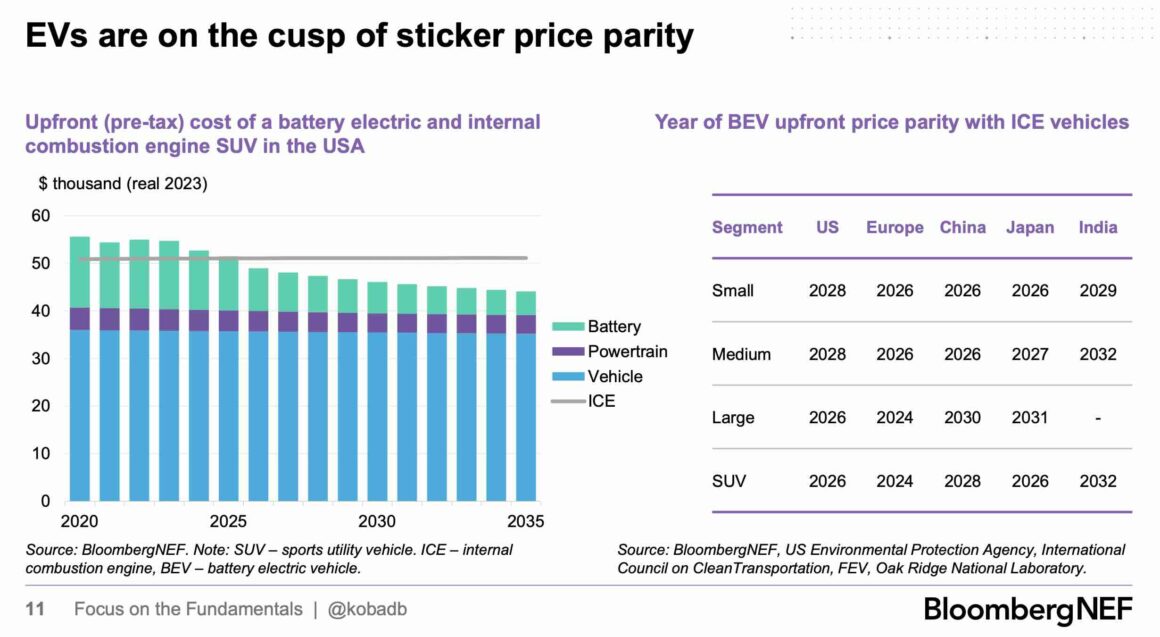Electric vehicles may already match and beat internal combustion cars on measures such as total cost of ownership, but it is generally accepted that the real tipping point in the global EV market will not come until there is “price parity” on the sticker price of the cars.
The 20 per cent fall in battery prices over 2024 – and continued falls in 2025 – should help that. According to BloombergNEF data, battery cell and pack prices have fallen to $US112/kWh – down from $US166/kWh in 2022 and $US806/kWh in 2013 – a reminder that this technology is and has fallen at a similar rate to solar PV modules.
Kobad Bhavnagri, the global head of strategy at BloombergNEF, says it is clear that the cost of batteries have resumed their downward trend after a brief rise in the global energy price fuelled by Russia’s invasion of Ukraine.
“Now this is, of course, important for what it helps enable in storage in the power system,” Bhavnagri told the Australian Clean Energy Summit on Tuesday.
“But it is even more important in the fact that it drives a tipping point in electric vehicle economics, which are on the cost of sticker price parity with internal combustion engine vehicles in most major markets for most classes of passenger vehicle.

“But it is even more important in the fact that it drives a tipping point in electric vehicle economics, which are on the cost of sticker price parity with internal combustion engine vehicles in most major markets for most classes of passenger vehicle.
“And this is going to mean that electric vehicle sales will continue to go up this year. “We expect that one in four vehicles sold around the world will have a plug. And the only real direction for that is for greater and greater shares.”
According to the BloombergNEF data, large electric SUVs in Europe have already reached price parity, and within the next year price parity will arrive for small and medium EVs in Europe, large SUVs in the US, small and medium EVs in China, and small EVs in Japan.

Giles Parkinson is founder and editor of The Driven, and also edits and founded the Renew Economy and One Step Off The Grid web sites. He has been a journalist for nearly 40 years, is a former business and deputy editor of the Australian Financial Review, and owns a Tesla Model 3.

